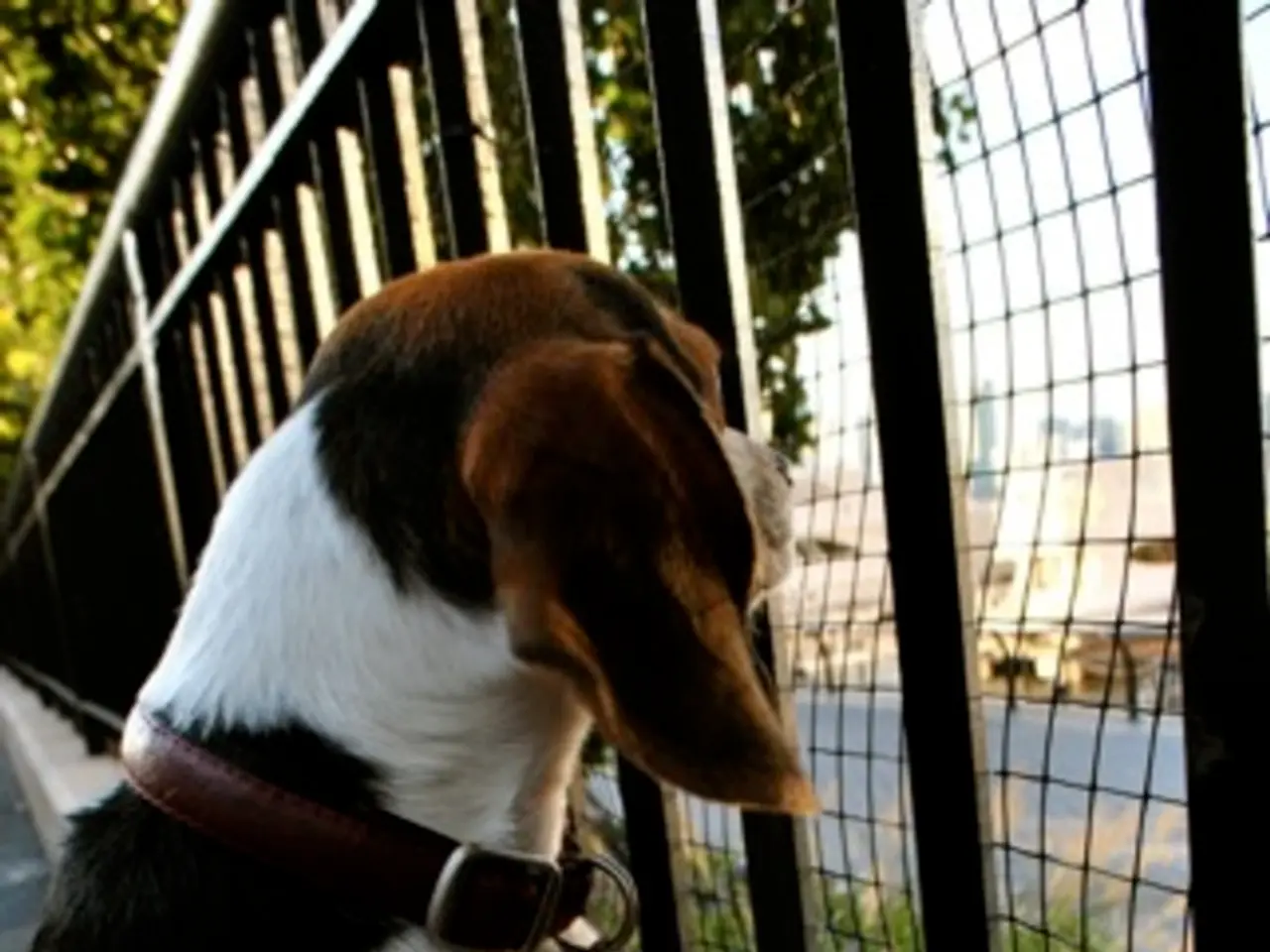Controversy Over Supreme Court's Stray Dog Directive Surfaces Following Public Outcry
The Supreme Court's stray dog order, issued on August 11, 2025, has sparked a significant debate in Delhi-NCR. The order mandated the relocation of all stray dogs from residential areas to designated shelters within eight weeks, citing public safety and rabies prevention. However, a potential review could lead to changes that strike a balance between public health concerns and animal welfare.
Initially, the Court's order was met with strong opposition from animal rights activists, who argued that relocation is impractical and that sterilisation and vaccination (the Catch-Neuter-Vaccinate-Release or CNVR approach) is the more humane and sustainable solution.
Recently, a larger bench modified the order, allowing vaccinated and sterilised stray dogs to be released back to their original areas unless they show aggressive behavior or are rabies-infected. The Court also prohibited feeding stray dogs in public but mandated the creation of designated feeding zones within municipal wards. Moreover, the Court transferred all similar pending matters from high courts to itself for framing a national policy.
If the review goes ahead, it could result in a policy shift towards the CNVR approach, effectively managing stray dog populations while protecting human health. It could also lead to a comprehensive national policy on stray dog management, impacting how cities beyond Delhi-NCR handle the issue.
The review could address practical challenges like inadequate shelter capacity and funding, potentially steering emphasis on ward-level feeding zones and community engagement rather than large-scale sheltering. Ensuring measures for aggressive or rabid dogs’ immunisation will continue to be a priority to prevent disease transmission and dog bite incidents.
The review may also resolve conflicts between existing laws and the new directives, ensuring enforcement aligns with legal animal welfare frameworks. If Chief Justice BR Gavai follows through on his statement, the Supreme Court stray dog order could be modified to align with humane relocation guidelines or community-based management approaches.
The balance between compassion and caution will determine whether this ruling becomes a landmark in urban animal governance or a cautionary tale about well-intentioned but flawed interventions. The coming months will likely determine whether the current hardline approach is tempered by more balanced, science-driven policies, potentially setting an important precedent for how India manages urban wildlife-human interactions in the future.
It is important to note that there are an estimated 60,000 stray dogs in Delhi-NCR alone. Should relocation proceed in part, a parallel investment in modern, spacious shelters with proper veterinary care would be essential to avoid animal cruelty concerns.
Meanwhile, awareness drives to promote responsible pet ownership, discourage abandonment, and encourage vaccination could address the root causes of stray dog populations. Vaccination drives in some cities have reduced rabies transmission without mass relocation.
Urban sociologists argue that community dogs often act as a deterrent against petty crimes in low-visibility areas, and removing them could inadvertently affect neighborhood security dynamics. International animal rights organizations have expressed concerns about the Supreme Court stray dog order, suggesting that global best practices focus on community engagement and sterilization rather than relocation.
In summary, the review could recalibrate Delhi-NCR's approach to stray dog management towards more sustainable and humane methods, ensuring public safety without forcibly removing and permanently sheltering all stray dogs. It will likely influence future policy formulation nationally and clarify legal ambiguities around relocation versus sterilisation-release protocols.
The ongoing review may result in a shift in policy-and-legislation towards more sustainable and humane methods of stray dog management, focusing on the Catch-Neuter-Vaccinate-Release (CNVR) approach instead of compulsory relocation. This change could lead to a comprehensive national policy impacting how cities beyond Delhi-NCR handle stray dog populations (politics).
The review is also expected to address practical challenges, such as inadequate shelter capacity and funding, by emphasizing on ward-level feeding zones and community engagement, instead of large-scale sheltering (general-news).







